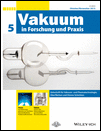UV-verstärkte Silberschichten
Optimierte Umweltbeständigkeit auf Silizium und Glas
Abstract
deFür den Bau optischer Instrumente sind silberbeschichtetet Spiegel von großer Bedeutung, weil Silber (Ag) das Metall mit der höchsten Reflexion vom sichtbaren (VIS)- bis in den infraroten (IR)-Spektralbereich ist. Am IOF durchgeführte Untersuchungen zeigen, dass die Abscheidung einer geschlossenen und dichten Schutzschicht eine notwendige jedoch keine ausreichende Bedingung für einen effektiven Schutz der Silberschicht ist: Hygroskopische Partikel können auch eine Ag-Schicht schädigen, auf die eine fehlerfreie Schutzschicht abgeschieden worden ist. Daher wurden verbesserte Schutzschichten entwickelt, die auf einem Ansatz mit Nanolaminaten basieren. Mit diesem Ansatz kann sowohl die Umweltbeständigkeit als auch die optische Performance von geschützten Silberschichten verbessert werden.
Abstract
enUV-enhanced Ag-coatings with optimized environmental stability
For the construction of optical instruments, mirrors with silver (Ag) coatings are of great importance, because Ag has the highest reflectivity of all metals from the visible (VIS) throughout the infrared (IR) spectral range. Investigations performed at IOF show, that the deposition of a closed and dense protective layer is a necessary but not a sufficient condition for the effective protection of silver: hygroscopic particles can harm even silver coatings protected by a previously defect-free protective layer. In order to improve the protection, a nanolaminate approach for Ag-protection has been developed. By this approach, both the environmental stability and the optical performance can be optimized.




